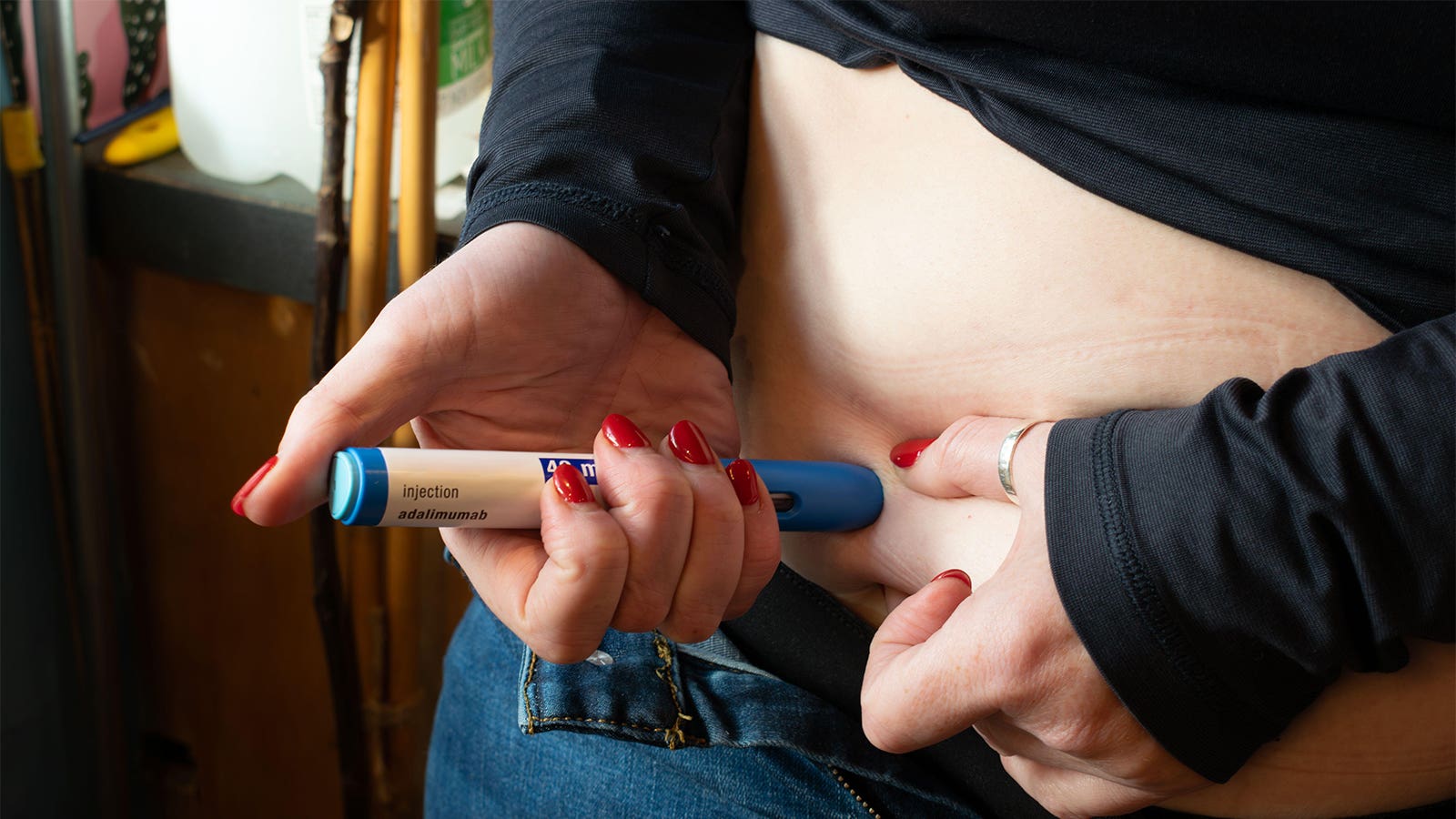Spanish patients with various forms of inflammatory arthritis who started either etanercept or adalimumab were more likely to continue taking them if they were biosimilar versions rather than the originator product, researchers found.
Discontinuation rates over 2 to 3 years of follow-up were 53.3{e60f258f32f4d0090826105a8a8e4487cca35cebb3251bd7e4de0ff6f7e40497} for originator products versus 33.4{e60f258f32f4d0090826105a8a8e4487cca35cebb3251bd7e4de0ff6f7e40497} for biosimilars, according to María Paz Martínez-Vidal, MD, PhD, of Hospital Universitario San Juan de Alicante in Alicante, Spain, and colleagues.
That translated to an adjusted hazard ratio of 0.84 (95{e60f258f32f4d0090826105a8a8e4487cca35cebb3251bd7e4de0ff6f7e40497} CI 0.75-0.95) in favor of biosimilars, the group reported in the Journal of Rheumatology, after excluding patients who discontinued for nonmedical reasons.
But it wasn’t clear exactly what it was that patients (or their clinicians) disliked more about originator etanercept (Enbrel) and adalimumab (Humira). When examining the two most common medical reasons for discontinuation — adverse effects and lack of efficacy — neither was significantly more common with either type of drug.
“In real-world practice, this can be reassuring when deciding to start a biosimilar,” Martínez-Vidal and colleagues wrote.
Findings came from a Spanish registry called BIOBADASER, which enrolls patients with rheumatic diseases who are prescribed biologic or targeted synthetic drugs. The analysis focused on 4,162 patients prescribed either subcutaneous etanercept or adalimumab from 2016 (when the first etanercept biosimilar became available in Spain) to 2023. Mean follow-up averaged 2.5 years for etanercept and 1.8 years for adalimumab. In both cases, mean follow-up was somewhat longer for patients starting the originator version.
Some 46{e60f258f32f4d0090826105a8a8e4487cca35cebb3251bd7e4de0ff6f7e40497} of patients had rheumatoid arthritis, and 4{e60f258f32f4d0090826105a8a8e4487cca35cebb3251bd7e4de0ff6f7e40497} had juvenile idiopathic arthritis. Diagnoses for the rest were evenly divided between axial spondyloarthritis and psoriatic arthritis. This distribution of arthritis types did not differ markedly between the etanercept and adalimumab patients. Mean patient age overall was about 50, and about 60{e60f258f32f4d0090826105a8a8e4487cca35cebb3251bd7e4de0ff6f7e40497} were women.
With both drugs, more than 80{e60f258f32f4d0090826105a8a8e4487cca35cebb3251bd7e4de0ff6f7e40497} of patients started a biosimilar. Unlike some biologics given by infusion, this was not mandated by the Spanish health service, although it was “thoroughly encouraged,” Martínez-Vidal and colleagues noted.
Nonmedical discontinuation — because of supply shortage or hospitals’ strategic decisions — was substantially more common for originator drugs (18.3{e60f258f32f4d0090826105a8a8e4487cca35cebb3251bd7e4de0ff6f7e40497} of adalimumab courses and 17.4{e60f258f32f4d0090826105a8a8e4487cca35cebb3251bd7e4de0ff6f7e40497} of etanercept courses, versus 2.9{e60f258f32f4d0090826105a8a8e4487cca35cebb3251bd7e4de0ff6f7e40497} and 3.1{e60f258f32f4d0090826105a8a8e4487cca35cebb3251bd7e4de0ff6f7e40497}, respectively, for biosimilar versions). Also, 14{e60f258f32f4d0090826105a8a8e4487cca35cebb3251bd7e4de0ff6f7e40497} of adalimumab courses and 15{e60f258f32f4d0090826105a8a8e4487cca35cebb3251bd7e4de0ff6f7e40497} of etanercept courses were stopped for reasons classified as “other,” such as pregnancy, loss to follow-up, or patients’ unexplained decisions; there was no difference here, however, between biosimilars and originators.
Another reason given for discontinuing the biologic was achieving remission. This was uncommon, though numerically more frequent with originator drugs (roughly 3{e60f258f32f4d0090826105a8a8e4487cca35cebb3251bd7e4de0ff6f7e40497} vs <1{e60f258f32f4d0090826105a8a8e4487cca35cebb3251bd7e4de0ff6f7e40497} for biosimilars).
Besides using a biosimilar instead of the originator product, other factors predicting longer treatment retention included longer disease duration (HR 0.89, 95{e60f258f32f4d0090826105a8a8e4487cca35cebb3251bd7e4de0ff6f7e40497} CI 0.83-0.95, for each 10-year increment) and concomitant methotrexate (HR 0.84, 95{e60f258f32f4d0090826105a8a8e4487cca35cebb3251bd7e4de0ff6f7e40497} CI 0.76-0.93). On the other side, use of the biologics as second- or later-line treatment was associated with higher risk of discontinuation (HR 1.17 and 1.24, respectively, both P<0.05).
Kaplan-Meier survival curves showed no difference in retention whatsoever when looking solely at discontinuations for adverse effects and for lack of efficacy. This was not unexpected, as the extensive testing required for biosimilars has to show equivalent clinical effects in order to win approval.
Limitations to the study included its reliance on administrative records and the potential for unmeasured confounders to influence the results.
Disclosures
No specific funding for the current analysis was reported. The BIOBADASER registry is supported by AbbVie, Biogen, Bristol Myers Squibb, Celltrion, Galapagos, Janssen, Lilly, Merck Sharp and Dohme, Novartis, Pfizer, Sanofi, and Samsung Bioepis.
Three authors including Martínez-Vidal reported relationships with several of these firms and others. Other authors declared they had no relevant financial interests.
Primary Source
Journal of Rheumatology
Source Reference: Martínez-Vidal MP, et al “Long-term survival of subcutaneous biosimilar tumor necrosis factor inhibitors compared to originators: results from a multicenter prospective registry” J Rheumatol 2024; DOI: 10.3899/jrheum.2024-0001.



